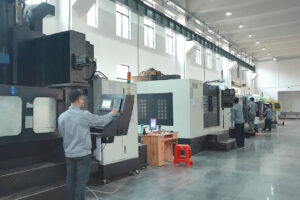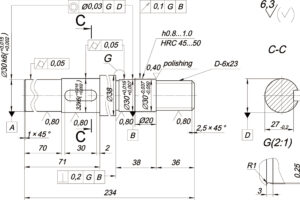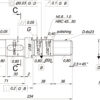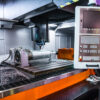What are the factors that affect the tolerance of 3D printed parts?
Materials: Some materials bend more quickly than others. Bending occurs when the manufactured part cools after production or when the raw material has enough internal stress to deform the part.
Nylon bends or twists easily, while polycarbonate is stiffer and more stable for large or broader parts. Material conditions such as age, percentage of recycled material, and moisture content also affect the results.
Temperature: Temperature differences in the build can cause changes in print results.
Other parts on the building board will cause the temperature to rise, and fewer parts on the building board will cause the temperature to drop. These thermal changes can soften the edges and push the part’s dimensions to vary slightly from build to build.
Print Density: The number of parts in a build and their unique shape can affect the results of their neighbors.
In selective laser sintering (SLS) processes, densely packed parts can conserve and distribute excess heat to the build area. This can affect how well the material fuses, resulting in thicker edges and part stress that can cause deflection during cooling.
Geometry: Similar to the principles behind temperature and print density, parts with thicker sections will hold longer in these areas than thinner geometries. This can cause shifts or deviations in the shrinkage of standard prints.
Thicker cross-sections in SLS will result in increased fusion time on these specific layers, which may result in a slight increase in part thickness due to high heat exposure.
Orientation and Support: Since 3D printing builds parts layer by layer, the orientation of a part in a build can significantly affect its outcome. Most 3D printing processes require support structures, which are sacrificial features to create overhanging geometry during the 3D printing process. This may affect the surface finish or tolerances in this area compared to parts with unsupported structures.
Typically, parts should be oriented to minimize supports or reduce thick cross-sections to create standard print times per layer. Support areas in processes such as stereolithography (SLA) or direct metal laser sintering (DMLS) will require manual removal of the support structure, leaving a grid of small protrusions where the supports are attached.
Suggestions for part design details:
We have 6 tips for designing 3D printed parts that may help you!
Minimum wall thickness
It is recommended that any design features be placed more than 0.6 mm (0.024 in) on self-supporting elements such as X, T, O, or C shapes. A minimum of 1.2 mm (0.048 in) is recommended for unsupported or weight-bearing features such as I-shapes, pins, or lugs.
Gaps between functions
To ensure that part features have usable clearance, it is essential to design for a release of at least 0.5 mm (0.020 in).
Remove the airtight hollow
Most commercial 3D printing processes will retain material or support structures in confined pockets. It is necessary to clean or drain these areas within sight. These entry areas are often referred to as “escape holes” because they allow material to escape during post-processing. Any cavity with a depth of more than 50.8 mm (2.000 in.) with only one entry point, such as a boss, may require multiple escape holes to clean.
Everything with rounded corners
In each 3D printing process, it is best to use rounded or rounded inner and outer corners to ease transitions between features and reduce sharp stress points. Generously rounded corners can improve the end-use performance of the printed part.
Note the cantilever
3D printing offers great design freedom. Features like the cantilever and “lollipop head” may be more refined than the rest. It is essential to keep these features in mind when designing, especially if they are critical to functionality. Sometimes it makes sense to make these features replaceable or use off-the-shelf pins to produce them on large parts where the weight of the part could crush or damage the components.
Design with uniform wall thickness
3D printed parts have many design tricks for injection molding, including uniform wall thickness. A uniform wall thickness will help mitigate any thermal deviation between thick and thin transitions on the part. These can be caused by uneven cooling of the part as it grows or solidifies. Adding ribs, coring, and lattice structures can increase strength without increasing the thickness of the part. An exception is Fused Deposition Modeling (FDM), where the infill can be modified to give sparse, lattice-like cross-sections of similar results.







